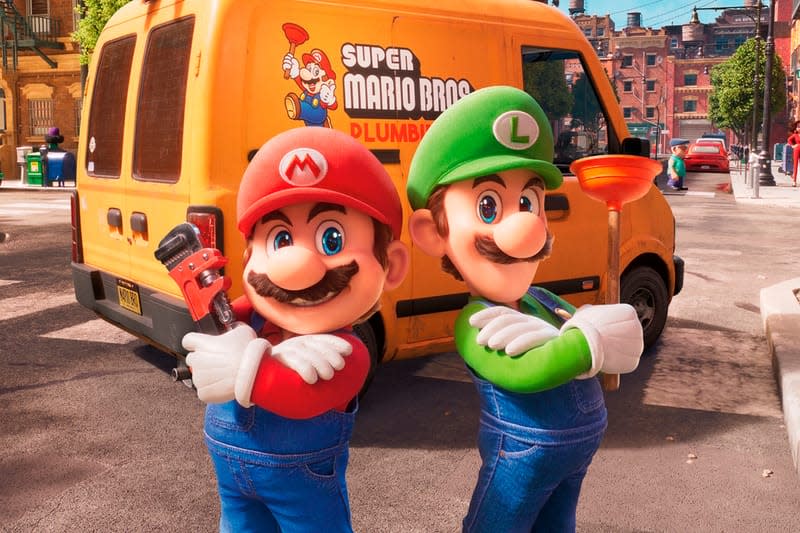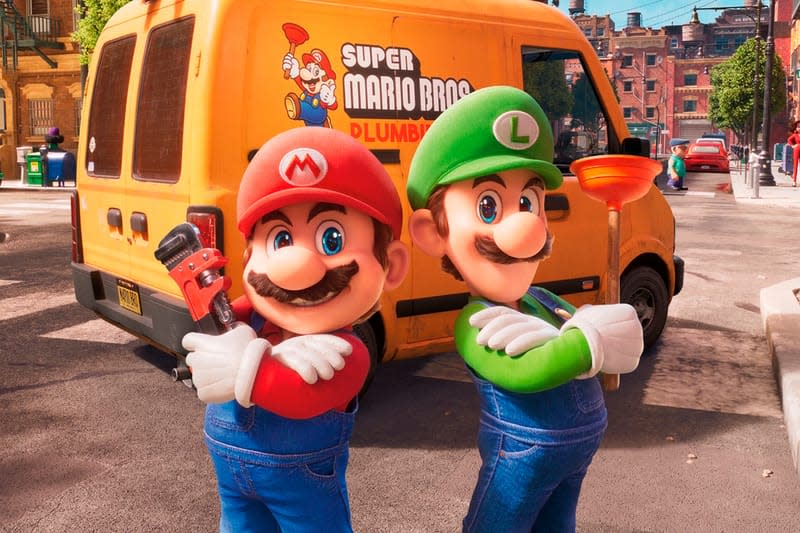Mario in Other Media, Nintendo's Road to 'The Super Mario Bros. Movie'
The Super Mario Bros. franchise is arguably one of the most iconic and beloved series in the history of video games. Over the years, Mario has become a cultural icon, not only appearing in video games but also in various forms of media, including films and television shows. Despite the unprecedented success of The Super Mario Bros. Movie which has become the highest-grossing video game movie, having grossed over one billion USD at the box office, Nintendo has had a somewhat checkered history with its Mario adaptations in the past.
The success of The Super Mario Bros. Movie is a culmination of a long and winding journey for the Mario franchise. From the infamous live-action Super Mario Bros. movie of 1993 to the various animated shows based on The Super Mario Bros. game series, Mario has seen ups and downs when it comes to films and TV shows.
Take a look back at some of the films and TV shows featuring Nintendo's beloved plumber, Mario below.
Saturday Supercade, 1983-84
Before Mario became the character we come to know and love with the release of Super Mario Bros. in 1985, Mario served as the hero in Nintendo's arcade game Donkey Kong. The success of Donkey Kong spurred the release of a Saturday morning cartoon series, titled "Saturday Supercade." Produced for two seasons on CBS by Ruby-Spears Productions, the series featured segments based on multiple video game characters from the Golden Age of arcade video games. Characters spotlighted included Frogger (Frogger), Q*bert with Coily, Ugg, Wrongway, Slick, and Sam (Q*bert), Pitfall Harry, Quickclaw, and Rhonda (Pitfall!), and of course Donkey Kong with Mario and Pauline.
Mario's appearance, voiced by Peter Cullen), would revolve around Mario's attempts to return the escaped Kong to the circus. As in the original game, Kong frequently takes Pauline after being tricked by villains. Mario must foil the villains' plans and save Pauline, with Donkey Kong taking off again soon after.
Super Mario Bros.: The Great Mission to Rescue Princess Peach!, (1986)
Well before the arrival of The Super Mario Bros. Movie, Mario's first appearance in a film came in the form of a short Japanese animated feature. Titled Super Mario Bros.: The Great Mission to Rescue Princess Peach!, the early piece of media is a major yet often forgotten piece of the character's history. Directed by Masami Hata and produced by Masakatsu Suzuki and Tsunemasa Hatano, the joint production from Nintendo and Shochiku-Fuji Company follows Mario on his quest to save Princess Peach after being kidnapped by King Koopa/Bowser. Assisted by his brother Luigi, the two beloved plumbers foil the foe's intent to marry the princess.
It is interesting to note Super Mario Bros.: The Great Mission to Rescue Princess Peach! was only released in Japan and has been seen by very few outside the country. Despite the limited release, the film has had an undeniable influence on Mario's video game trajectory, serving as inspiration for Mario's classic relationship with Bowser and Princess Peach.
The Super Mario Bros. Super Show!, (1989)
Building on the popularity of Super Mario Bros. and Super Mario Bros. 2, The Super Mario Bros. Super Show! is celebrated at the most famous TV show featuring Mario. Produced by Saban Productions, DIC Enterprises, and Nintendo of America with animation by Sei Young Animation delivered a mix of animated and live-action segments starring wrestler Captain Lou Albano as Mario and Danny Welles as Luigi. Unlike the games, The Super Mario Bros. Super Show! saw Mario and his friends travel and go on adventures in various themed locations.
Despite not being explicitly tied to the game series, The Super Mario Bros. Super Show! is celebrated fondly by early fans that grew up watching the show. It is interesting to note, the song used in the Mario Bros. Plumbing commercial featured in The Super Mario Bros. Movie is the theme song for The Super Mario Bros. Super Show! and is known on the Internet as the "Mario Rap."
The Adventures of Super Mario 3, (1990)
Released in 1990 in North America, Super Mario Bros. 3, is considered one of the most critically acclaimed and best-selling video games in history, the popularity of the title spurred the release of The Adventures of Super Mario 3. Once again animated by Sei Young Animation and jointly produced by companies DIC Animation City
Reteitalia, and Nintendo of America, The Adventures of Super Mario 3 utilized new voice actors and focused closely on the storylines, characters, and settings of the game.
Airing on NBC, the show received 26 episodes before being followed up by a follow-up season titled Super Mario World.
Super Mario Bros., (1993)
Finally, in 1993 came Super Mario Bros., the last time Nintendo tried to bring Mario to the big screen. The failure of the film kept the video game company from attempting to make another film for 25 years and was heavily discussed during the production of The Super Mario Bros. Movie. The now cult film featuring Bob Hoskins as Mario and John Leguizamo as Luigi is noted for its interesting realistic look, questionable humor, and production problems.
Despite building on the beloved franchise revolving around Mario, Super Mario Bros. saw Mario and Luigi enter a dimension ruled by dinosaur-human hybrids. Other interesting creativity liberties taken saw Toad as a musician, Yoshi come as an actual dinosaur, and King Koopa/Bowser as a ruthless business figure.


